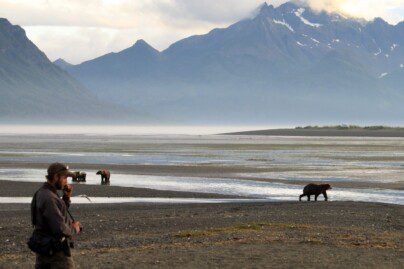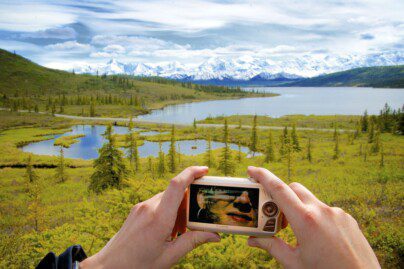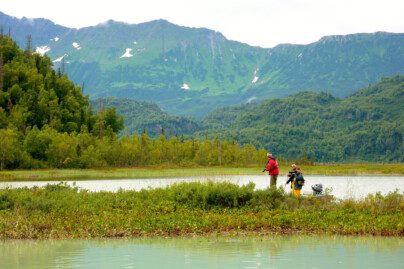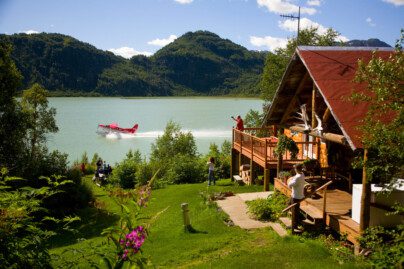Lake Clark National Park and Preserve in Alaska’s southwest region was established in 1980 to protect this area’s scenic beauty, including volcanoes, massive glaciers, wild rivers, and spectacular waterfalls. The region also offers critical habitat for fish and wildlife, including a massive watershed essential for red salmon. Lake Clark itself is 1056 feet deep and covers 128 square miles. Thousands of years ago, the lake (and nearby Lake Iliamna) may have been open to salt water before being closed off by glacial outwash deposits. The glaciers of the last ice age retreated from Lake Clark National Park 14,000 years ago, and the earliest archaeological evidence of people in the park is about 10,000 years old. Lake Clark National Park and Preserve provide an authentic Alaska wilderness experience for those who visit.
Alaska wilderness backpacking, hiking, rafting, kayaking, wildlife viewing, and fishing are the primary activities in Lake Clark National Park and Preserve.
Lake Clark National Park and Preserve are not on the road system, and access is primarily by small aircraft. Float planes may land on lakes throughout the area. Wheeled planes land on open beaches, gravel bars, or private airstrips in or near the park. A one to two-hour flight from Anchorage, the Kenai, or Homer will provide access to most points within the park and preserve. There is no highway access to the park and preserve. When weather and tides permit, the park’s east side on the Cook Inlet coast may be accessed by boat from the Kenai Peninsula.
There are several hunting, fishing, and recreational wilderness lodges in Alaska located at Port Alsworth or on Lake Clark itself. Along the park boundary on the Cook Inlet Coast, you will find great bear-viewing opportunities, including Redoubt Bay Lodge.





